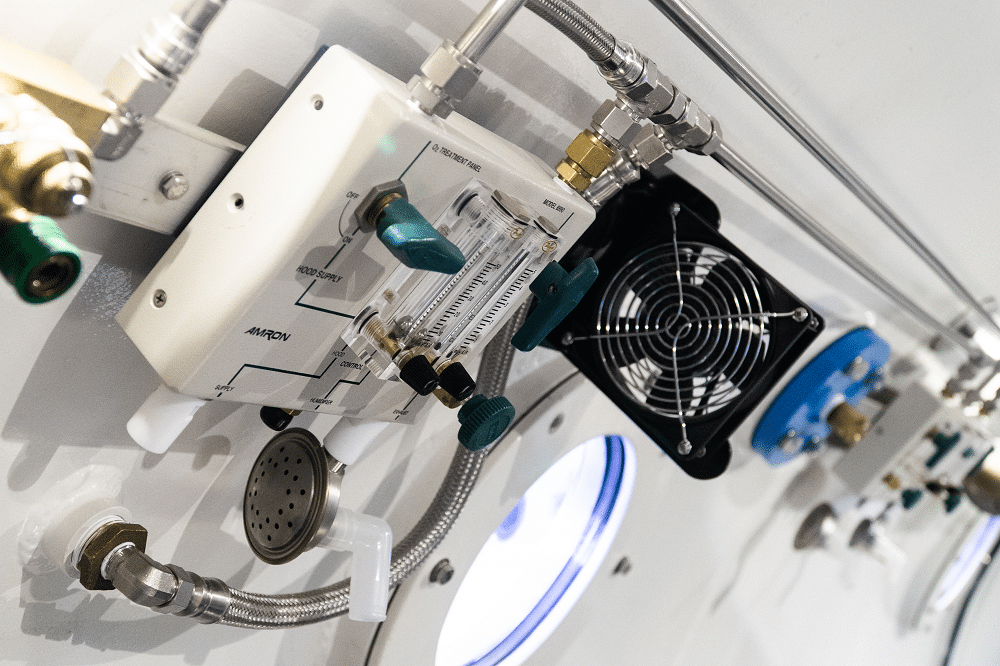Traumatic brain injury (TBI) is a serious public health problem in the United States. Survivors of TBI are often left with significant cognitive, behavioral, and communicative disabilities. So far there is no effective treatment/intervention in the daily clinical practice for TBI patients. The protective effects of hyperbaric oxygen therapy (HBOT) have been proved in stroke; however, its efficiency in TBI remains controversial. In this review, we will summarize the results of HBOT in experimental and clinical TBI, elaborate the mechanisms, and bring out our current understanding and opinions for future studies.
Key Brain Damage Research
Key Research for Hyperbaric Oxygen Therapy (HBOT) for Brain Damage.
Treatment of persistent post-concussion syndrome due to mild traumatic brain injury: current status and future directions.
Persistent post-concussion syndrome caused by mild traumatic brain injury has become a major cause of morbidity and poor quality of life. Unlike the acute care of concussion, there is no consensus for treatment of chronic symptoms. Moreover, most of the pharmacologic and non-pharmacologic treatments have failed to demonstrate significant efficacy on both the clinical symptoms as well as the pathophysiologic cascade responsible for the permanent brain injury. This article reviews the pathophysiology of PCS, the diagnostic tools and criteria, the current available treatments including pharmacotherapy and different cognitive rehabilitation programs, and promising new treatment directions. A most promising new direction is the use of hyperbaric oxygen therapy, which targets the basic pathological processes responsible for post-concussion symptoms; it is discussed here in depth.
Clinical results in brain injury trials using HBO2 therapy: Another perspective.
The current debate surrounding the use of hyperbaric oxygen (HBO2) for neurological indications, specifically mild to moderate chronic traumatic brain injury (mTBI) and post-concussion syndrome (PCS), is mired in confusion due to the use of non-validated controls and an unfamiliarity by many practitioners of HBO2 therapy with the experimental literature. In the past 40 years, the use of an air sham (21% oxygen, 1.14-1.5 atmospheres absolute/atm abs) in clinical and animal studies, instead of observational or crossover controls, has led to false acceptance of the null hypothesis (declaring no effect when one is present), due to the biological activity of these “sham” controls. The recent Department of Defense/Veterans Administration (DoD/VA) sponsored trials, previous published reports on the use of HBO2 therapy on stroke and mTBI and preliminary reports from the HOPPS Army trial, have helped to highlight the biological activity of pressurized air, validate the development of a convincing control for future studies and demonstrate the effectiveness of a hyperbaric intervention for mTBI/ PCS. Approval of HBO2 for neurological indications, especially for mTBI/PCS, should be granted at the federal, state and certifying body levels as a safe and viable treatment for recovery in the post-acute phase.
Hyperbaric oxygen therapy for the treatment of traumatic brain injury: a meta-analysis.
Compelling evidence suggests the advantage of hyperbaric oxygen therapy (HBOT) in traumatic brain injury. The present meta-analysis evaluated the outcomes of HBOT in patients with traumatic brain injury (TBI). Prospective studies comparing hyperbaric oxygen therapy vs. control in patients with mild (GCS 13-15) to severe (GCS 3-8) TBI were hand-searched from medical databases using the terms “hyperbaric oxygen therapy, traumatic brain injury, and post-concussion syndrome”. Glasgow coma scale (GCS) was the primary outcome, while Glasgow outcome score (GOS), overall mortality, and changes in post-traumatic stress disorder (PTSD) score, constituted the secondary outcomes. The results of eight studies (average age of patients, 23-41 years) reveal a higher post-treatment GCS score in the HBOT group (pooled difference in means = 3.13, 95 % CI 2.34-3.92, P < 0.001), in addition to greater improvement in GOS and lower mortality, as compared to the control group. However, no significant change in the PTSD score was observed. Patients undergoing hyperbaric therapy achieved significant improvement in the GCS and GOS with a lower overall mortality, suggesting its utility as a standard intensive care regimen in traumatic brain injury.
Hyperbaric oxygen therapy can improve post concussion syndrome years after mild traumatic brain injury – randomized prospective trial.
Traumatic brain injury (TBI) is the leading cause of death and disability in the US. Approximately 70-90% of the TBI cases are classified as mild, and up to 25% of them will not recover and suffer chronic neurocognitive impairments. The main pathology in these cases involves diffuse brain injuries, which are hard to detect by anatomical imaging yet noticeable in metabolic imaging. The current study tested the effectiveness of Hyperbaric Oxygen Therapy (HBOT) in improving brain function and quality of life in mTBI patients suffering chronic neurocognitive impairments. The trial population included 56 mTBI patients 1-5 years after injury with prolonged post-concussion syndrome (PCS). The HBOT effect was evaluated by means of prospective, randomized, crossover controlled trial: the patients were randomly assigned to treated or crossover groups.
Hyperbaric oxygen therapy (1.5 ATA) in treating sports related TBI/CTE: two case reports.
Despite adequate evidence, including randomized controlled trials; hyperbaric oxygen is not yet recognized as efficacious for treating various forms of brain injury, specifically traumatic brain injury. Political-economic issues have kept this benign therapy from being widely adopted despite the lack of viable alternatives. Two football players with TBI/CTE are herewith shown to benefit from being treated with hyperbaric oxygen as documented by neurocognitive examinations and functional brain imaging, in one case treatment commenced decades after the brain injury. Perhaps the interest in HBOT by those participating in high-risk sports will help expand this orphan therapy into mainstream medicine.

